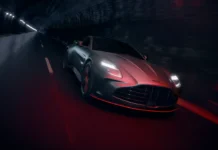
The safety investigation could lead to a larger-scale recall of Cruise autonomous vehicles.
Regulators at the National Highway Traffic Safety Administration noted a formal probe into the autonomous driving system used by General Motors’ robotaxi subsidiary Cruise LLC. According to published documents, these vehicle “may engage in inappropriately hard braking or become immobilized while operating in the specified Operational Design Domain (ODD).
The agency received notice of several incidents, though it explained the two types of incidents appear to be distinct. Specifically, three reports focused on hard braking maneuvers that resulted in rear-end collisions. In those cases, the vehicles were operating under human supervision, but the autonomous system effectively brake checked vehicles that quickly approached from behind.
As for Cruise vehicles becoming immobilized, the NHTSA mentioned it received “multiple reports” of the issue. All affected cars were operating without onboard human supervision. “When this occurs”, the report says, “the vehicle may strand passengers in unsafe locations, such as lanes of travel or intersections, and become an unexpected obstacle to other road users.” At this time, the exact number of immobilization incidents remains unknown.
The preliminary investigation covers 242 Cruise AV units, and could precede a formal recall, depending on its outcome. Currently, Cruise offers limited service with San Francisco using Chevrolet Bolt EVs. Cruise LLC, for its part, recalled 80 self-driving vehicles in September for a software update after a June crash left two occupants injured.
In response to the investigation, the company issued a statement (per Reuters):
“[Cruise AVs have] driven nearly 700,000 fully autonomous miles in an extremely complex urban environment with zero life-threatening injuries or fatalities…. There’s always a balance between healthy regulatory scrutiny and the innovation we desperately need to save lives, which is why we’ll continue to fully cooperate with NHTSA or any regulator in achieving that shared goal.”
The NHTSA’s Office of Defects Investigation (ODI) will determine the scope and severity of both the hard braking and immobilization issues. You can read through the agency’s report here.

























